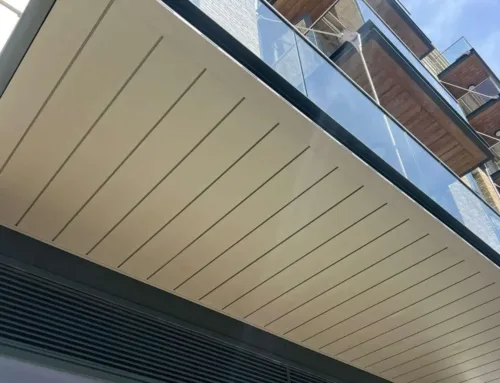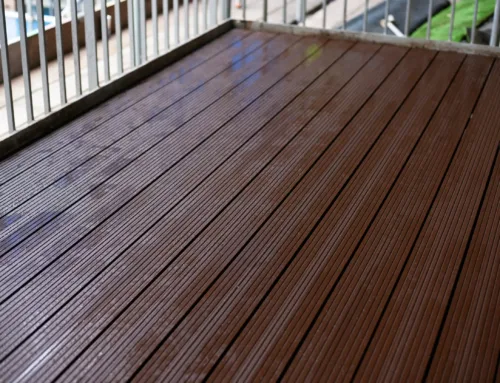Housing Secretary Michael Gove MP makes major intervention to Building Safety Crisis with sweeping proposals to fund cladding replacement, but gives scant regard for other defects such as wooden balconies
We saw a major development in the ongoing Building Safety Crisis yesterday when Michael Gove MP, the new Housing Secretary, delivered a speech to Parliament where he set out a new vision for the resolution of the now four-year-old saga of cladding removal and fire safety remediation.
While there was much that was positive in the speech, including the pledge that leaseholders will not face any costs to fix dangerous cladding, there are sadly serious gaps in the plan as regards other fire safety defects, such as wooden balconies.
A new plan for action
Mr Gove revealed a 4-point plan to reset the Government’s approach:
- Opening up the next phase of the Building Safety Fund, prioritising the government’s £5.1 billion funding on the highest risk
- Those at fault will be held properly to account, making them fix the buildings they built and face commercial consequences if they refuse
- Restoring common sense to building assessments: indemnifying building assessors from being sued; and withdrawing the old, misinterpreted government advice that prompted too many buildings being declared as unsafe;
- New protections for leaseholders living in their own flats: with no bills for fixing unsafe cladding and new statutory protections for leaseholders within the Building Safety Bill
The clear thrust of Mr Gove’s speech was to pin the liability to fund the essential remediation of dangerous cladding on to developers and industry.
While it is certainly manifestly unfair to put any of these costs on to leaseholders, there has already been a vocal response from industry bodies pointing out that it is equally unfair to place the blame at their feet when they built to regulations in place at the time. This will no doubt be the source of much debate in coming weeks.
Whatever the rights or wrongs of this approach may be, it is indisputable that action needs to be taken to resolve this debacle and finally begin to make the nation’s multi-occupancy buildings fire safe.
Non-cladding defects and a war on RICS
While it is encouraging to see this new, much firmer stance on expediting the remediation of dangerous cladding, many thousands of buildings across the UK are affected by non-cladding fire safety defects, such as wooden balconies.
In the body of Mr Gove’s speech, there was no mention of funding the remediation of these aspects of the crisis. When challenged on this point in a follow up by Labour’s Lisa Nandy MP that “one cannot make a building half safe”, Mr Gove responded that he agreed non-cladding costs need to be met and intends to bring forward amendments to the Building Safety Bill.
While this sentiment is appreciated, it is far from the absolute guarantee that leaseholders will be looking for with regards the combustible balconies and other non-cladding defects that have prevented them from selling their homes. We have no choice but to wait and see how this is addressed in future legislation.
A very interesting facet of the speech was the language used with regards “common sense” in assessing fire safety.
Previously, Government have issued statements that lenders have been too risk averse with regards fire safety and that pragmatic decisions should instead be made. This has always felt disingenuous from Government when considering that banks, and their surveyors, are simply applying the Government’s own building safety advice as outlined in the January 2020 Consolidated Advice Note (CAN)!
Mr Gove said in his speech that he will withdraw the CAN and that it “has been wrongly interpreted” and led to “a cautious approach to building safety in buildings that are safe that goes beyond what [Government] consider[s] necessary”.
The CAN certainly caused many issues when it was introduced, being responsible for bringing in to scope many thousands of new buildings due to its language, but it again feels disingenuous to blame industry for following the letter of the law. With the withdrawal of the CAN, this is now a moot point and the imminent publication of its replacement, PAS 9980, to guide fire risk assessment and appraisal is eagerly anticipated.
Mr Gove did also state that there are “too many buildings today that are declared unsafe” and that “we must find ways for there to be fewer unnecessary surveys”.
This is broadly in line with earlier statements by his Department and previous Housing Secretaries but it is troubling as it implies that the opinion of trained and certified fire engineers should be disregarded or that they should be instructed to ignore certain safety issues. Also, who decides which surveys are unnecessary? How can the lending industry incorporate this to its risk policies?
Linked to this is the extremely robust tone Mr Gove used towards the Royal Institution of Chartered Surveyors (RICS), the organisation that developed the EWS1 scheme.
With RICS recently refusing to amend their EWS1 criterion, Government has clearly taken umbrage with the organisation.
Mr Gove made the barely-veiled threat to “take the power to review the governance of the Royal Institution of Chartered Surveyors, to ensure that it is equipped properly to support a solution to this challenge” and that “those in the industry who refuse to work with us in good faith to take a more proportionate approach” should understand the Government’s determination to fix the problem…
Responding to a subsequent question, Mr Gove stated that “there have been all sorts of difficulties” with RICS and reiterated that there is “the potential to take steps to improve the governance of the institution” if required.
With RICS clearly in Mr Gove’s sights, it will be interesting to see how this plays out. If PAS 9980 is, as expected, a complex and detailed document with a laser focus on all aspects of fire risk in buildings, then the ultimate position RICS takes when it advises its surveyors may end up at odds with Mr Gove’s expectations, which may result in fireworks.
Have things changed?
On its face, this is a profound development in the Government’s position, with the clear new statement that “no leaseholder living in a building above 11 metres will ever face any costs for fixing dangerous cladding”. Similarly, the Government’s new focus on extracting money from developers and industry to fund remediation is a big movement on their previous position.
However, Mr Gove has resisted immediately legislating for this change and has only committed to entering discussions with developers. He did, though, make reference to possible future legislation and taxes if voluntary steps aren’t taken. These talks will unfold over the coming weeks and months so we should soon see the shape of things.
With no firm mention of the way forward for non-cladding defects, however, this statement has fallen far short of resolving the ongoing crisis. Many thousands of leaseholders in multi-occupancy buildings across the UK are in the same boat today as they were yesterday so more work must be done and Mr Gove must take bolder steps to finally move our nation to a fire safe future.








